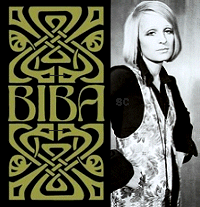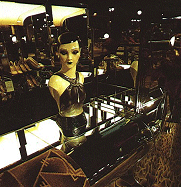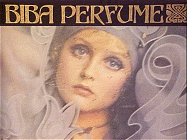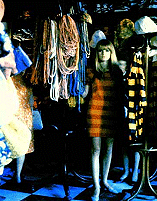Sixties
City presents
a wide-ranging series of
articles on all aspects of the Sixties, penned by the creator of the iconic
60s music paper Mersey
Beat
|
Sixties
City presents
a wide-ranging series of
articles on all aspects of the Sixties, penned by the creator of the iconic
60s music paper Mersey
Beat
|
||||||
|
|
Biba was
the legendary fashion store of the Sixties, the creation of Barbara Hulanicki
and her husband Stephen Fitzsimons. It was one of the freshest and most
exciting fashion emporiums of the Swinging Sixties. Barbara was born in
Warsaw and her mother brought her and her sisters to Britain after their
father was murdered by terrorists in Palestine. She studied at Art College
and became a freelance fashion artist for a variety of magazines. In 1961
she married ‘Fitz’ and he suggested they should set up a little business
in which she design garments which they would sell by post. They
decided to call the postal boutique Biba after Barbara’s youngest sister.
Their first
design was featured in the Daily Express and they followed up with further
offers in the Observer and Evening Standard.
The big break came when Felicity Green, fashion editor of the Daily Mirror, arranged a meeting and suggested she design a special dress for her readers. It was a sleeveless dress in pink gingham with a hole in the back and they eventually received a total of 14,000 orders. Barbara and Fitz then opened their first shop in Abingdon Road, Kensington and it was an immediate success and the beginning of the Biba legend. Customers included Cathy McGowan, Twiggy, Julie Christie, Cilla Black, Mia Farrow, Barbra Streisand, Brigitte Bardot, Samantha Eggar, Marianne Faithful and hosts of other celebrities. In 1965 the business had expanded so much that they had to move to larger premises in Kensington Church Street. Their increasing success and expansion plans led to them seeking financial backers and in Sept 69, they moved to even larger premises in Kensington High Street where they were getting up to 100,000 customers a week . Biba had an Art Deco style to its shop furnishings, promotional designs and catalogues and the fashion ranged from mini skirts and dresses (which led to colourful tights and knickers) to trouser suits, T-shirts, boots and even a children’s department at the back of the shop. |
 |
 |
Barbara
also devised new lines in cosmetics which were virtually revolutionary
– brown lipstick, which was soon followed by shades of blue, green, purple
and black with matching eyeshadows and contour powders. There were even
coloured wigs and boots with ridiculously high heels, all creating styles
which were copied throughout the world.
Her dream was to buy Derry and Tom’s, the giant department store in Kensington High Street and when it came onto the market her backers agreed to purchase it for more than three million pounds. Barbara and Fitz completely redesigned it in the Biba Art Deco style, introduced a 500-seater restaurant, the Rainbow Room (in which new bands such as Cockney Rebel and established artists such as Liberace were to perform) and a splendid roof garden. Unfortunately, ‘Big Biba’ became the scene of boardroom battles. A large property firm had taken over the business of some of the original backers and the new company began to alter the entire ambience of Biba, even suggesting that Barbara and Fitz keep away from the store. The couple attempted to save their dream store but failed. They sold their own interest in the business and went to live in Brazil for several years before returning to England in the Eighties. Barbara’s autobiography, ‘From A To Biba,’ is rich in anecdotal stories in vivid word pictures of the girls who wore her fashions. Describing how the girls copied Cathy McGowan’s long hair and eye-covering fringe, she wrote, “Soon their little white faces were growing heavier with stage make-up, lids weighed down with doll-like thick fake lashes. Their matchstick legs were encased in pale tights and low-cut pumps. Miniskirts led to the adoption of tights. They seldom needed to wear roll-ons or bras. Their bosoms and tummies were so tiny there was no need for the heavy upholstery. |
|
The natural form was beginning to show.” Discussing
the miniskirt, she wrote, “It was through absolute ignorance that the mini
reached the streets. The short skirt was on the way but it was only seen
in showrooms. Courreges had made a strong impact on the world with his space-age
dresses. Mary Quant was the first British designer to show the mini but
I still say that our dear Theo Savva was the man responsible for putting
the mini on the high street.” Barbara describes how Theo received the jersey for some suits still steaming hot from the finishers. He cut the stretch double jersey without ‘resting’ it, which results in it relaxing back to its proper width. “It was not the uncut fabric that rested – it was the skirts!” she wrote. “When I saw the delivery I nearly had a heart attack. The skirts were only ten inches long. God, I thought. We’ll go bust – we’ll never be able to sell them. I couldn’t sleep, but that little fluted skirt walked out on customers as fast as we could get it on the hatstands.” There were streams of celebrities. Mia Farrow, then married to Frank Sinatra, was so pleased with her Biba purchases that she sent Barbara a bouquet of flowers. Yoko Ono borrowed a dress and had the smock cut into little pieces as part of one of her ‘happenings’ on TV. Barbara Streisand was pregnant when she arrived at Biba, but declined to have a private room and changed in the communal dressing room like everyone else. |
 |
 |
Barbara recalls, “Our greatest thrill was when Brigitte
Bardot came, just after her marriage to Gunter Sachs. They arrived one busy
Saturday. The shop was packed but as the news spread even more people rushed
in. Brigitte wanted to try on some dresses but Mr. Sachs would not let her
undress in the communal dressing room. Fitz and I and a friend were sitting
in our airless office, an old stock room. Suddenly Sarah came in and said
someone wanted to change in the corridor. She had a big grin on her face and winked as she closed the door, so I had to peep and see who it was…I couldn’t believe my eyes. There was Brigitte prancing from mirror to mirror with just her knickers on and Gunter trying to cover her up. I said, ‘Fitz you’ve got to see this!’ Brigitte wanted to go out as she was, undressed, to get more things from the shop, and her husband was frantically trying to stop her.” On another occasion, Barbara noted, “One night as we were closing a tiny blonde girl came in and began taking the clothes off the hatstands. Instead of trying them on behind the dangerously wobbly screen, she stripped off in the shop and proceeded to try on smocks and trouser suits. Fitz was told to stay in the back office, as the tiny uninhibited girl was prancing round dressed only in her knickers. She was magnetic – her skin was like marble and her features larger than life. It was Julie Christie, getting her wardrobe together for the film ‘Darling.’” |
 |
|
Article
|